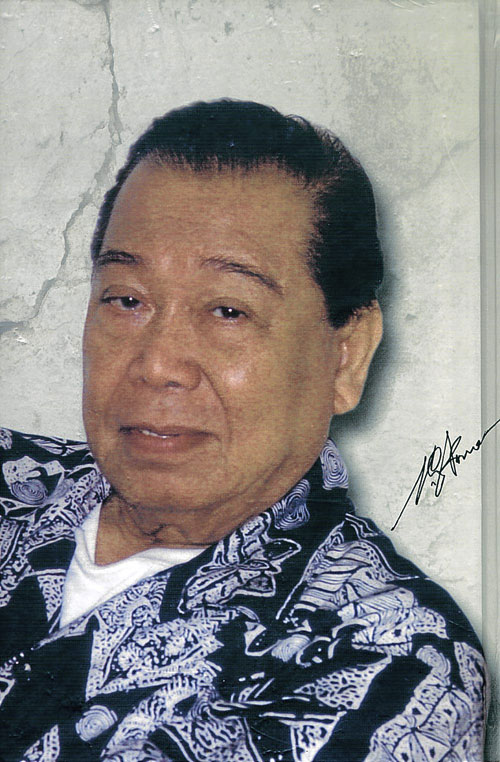
But Ponce is an engineer and his world is more about landmarks and monuments. In fact, the book would have provided fitting sidelights to the centennial celebration of the University of the Philippines’ system, with its first part devoted to how the Diliman campus took shape.
He was a student of the College of Engineering when it was tasked with the responsibility of working out the logistics and strategy for the safe transfer of the Oblation, the work of sculptor Guillermo Tolentino that had become the single most easily recognizable symbol of the state university, from the old campus on Padre Faura in Manila to Diliman, Quezon City.
In the 1950s, Ponce was the engineering inspector and supervisor of construction and development at the main UP campus in Diliman, overseeing the construction of several university landmarks.
UP’s ‘leaning tower’
Ponce, who had three master’s degrees, supervised the rise of a new structure that would tower over the campus, the Oblation included. He almost lost his job when rumors circulated that the 130-foot Carillon, built in 1952, was tilting and could become the Philippines’ version of Italy’s leaning tower of Pisa.
Despite the comparison to a popular tourist attraction, university president Dr. Vidal A. Tan was not amused, especially given the stirring oratory of President Elpidio Quirino, himself a UP alumnus, who proclaimed during its inauguration that the Carillon bells “will give us the opportunity to express ourselves to the world in times of confidence, in times of optimism, and in times of patriotic fervor…”
Ponce said a team of geodetic engineers assured Tan of the “straightness” of the Carillon.
Having become a close personal friend of the legendary UP chaplain, Fr. John Patrick Delaney, S.J., Ponce was also privy to the birth of the idea for a Catholic chapel in the Diliman campus, the planning and execution.
The circular Church of the Risen Lord—with a domed roof shaped like an inverted chalice, almost completely without walls and the altar at the center—was an instant success even though its unique architecture was the brainchild of a fresh graduate of the University of Santo Tomas, Leandro Locsin.
The church would eventually attain greater significance in the UP system and the rest of the country, declared a National Historical Landmark and an Important Cultural Property by the National Historical Institute. It would be a collaborative work of four Filipino National Artists, including its architect, Locsin. Sculptor Napoleon Abueva did the suspended cross with the crucified Christ on one side and the resurrected Christ on the other. Painter Vicente Manansala did 15 (instead of 14) panels of the stations of the cross while visual artist Arturo Luz designed the “geometric mosaic” mural on the floor called the “River of Life”.
Presidential summons

After years of working inside the self-contained “Diliman Republic” that functioned “with precision like a well-oiled machinery,” Ponce had, by presidential order no less, to venture outside UP. It seemed that what he had accomplished in the university had not gone unnoticed.
The Guy, as President Ramon Magsaysay was popularly known, asked Ponce, “Can you apply the ’Diliman Republic’ (system) to the Republic of the Philippines?”
Magsaysay asked UP’s project engineer to become a technical consultant for the government, reporting directly to him.
One of the things Ponce did for the Magsaysay administration was to draw up a spatial plan, “an ambitious integrated planning for the whole Philippines, designed to promote or accelerate its socio-economic development through the construction of infrastructure projects in various parts of the archipelago.”
The plan required the building of roads (including farm-to-market), bridges, ports, drainage and flood control projects. Islands were to be interconnected through bridges and a “nautical highway” with ports for roll-on, roll-off, now known as Ro-Ro, vessels.
A short time after he assumed his Malacañang post, Ponce came across a project that proved irresistible, the building of a tobacco redrying plant in Agoo, La Union. The successful conclusion of that task set him on the way to establishing his own business that would eventually lead to an ambitious project that would also be a heartbreaker.
Ferdinand Marcos persuaded Ponce to undertake the construction of the complex and expensive Mactan-Cebu bridge that the President promised the residents of the province. Despite the difficulties, Ponce delivered, practically using up his personal capital to finish the project.
Alas, Cebu’s pride and joy would prove to be a trap that continues to hold Ponce captive. Now in his 80s, Ponce has yet to collect from the government the payment for the bridge that was completed in 1972.
Martial Law, Edsa I and II, and other government changes have failed to get the money owed him. Even the Supreme Court’s 2005 decision declaring as “final and executory” an order requiring the government to pay Ponce for his services had remained unimplemented. Ponce said the total had now ballooned to some P10 billion because of the delay.
But Ponce continues to hope that the “spider”—government bureaucracy and red tape—that holds him in its web will finally be slain.
“Killing the Spider: Memoirs of Engr. Vicente C. Ponce” (As Told to Rolando E. Villacorte) was published by the E. C. TEC Commercial. It is available at UP Press Book Shop, UP Diliman, 9266642 and 9282558 ext. 110; and New Day Publishers, UCCP Bldg., 877 Edsa, QC, 9288046 and 9275984.
It wil also be in the booths of the two bookstores at the 15th Academic Bookfair, July 12-16, Megamall, Edsa, Mandaluyong City.













































